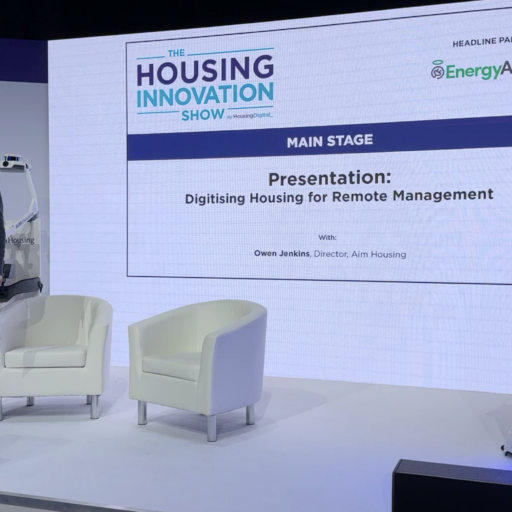On 12th February, AIM Housing’s Managing Director, Owen Jenkins, delivered an insightful presentation at the Housing Innovation event, highlighting the transformative power of digitisation in the social housing sector. The event brought together key industry leaders to discuss how technology can drive efficiency, improve data accuracy, and optimise property management.
Addressing the Data Challenge
One of the biggest issues in housing management is the lack of accurate, up-to-date data. Owen emphasised how poor-quality data leads to ineffective decision-making and inefficiencies across large property portfolios.
Historically, gathering and maintaining reliable property data has been a complex and resource-intensive task. With fragmented records and outdated manual collection processes, housing providers have struggled to stay ahead.
AIM Housing’s Innovative Approach
AIM Housing is leading the charge in overcoming these data challenges. By integrating Energy Performance Certificate (EPC) data directly with property portfolios, AIM has streamlined energy efficiency planning. This enables housing providers to identify high-priority properties and implement cost-effective sustainability upgrades with precision.
The Power of Digitisation
Owen outlined how AIM Housing has embraced 360-camera technology and mobile laser scanning to digitise property portfolios. This cutting-edge approach allows for real-time data updates, visual cross-referencing, and improved accuracy, all while reducing the need for repeated site visits.
By leveraging these tools, AIM Housing is not only enhancing operational efficiency but also reducing its carbon footprint and costs by 50%. The ability to remotely manage property data is proving to be a game-changer for the sector.
Looking to the Future: AI and Predictive Analytics
While the presentation largely focused on current innovations, Owen also touched on the potential of artificial intelligence (AI) in shaping the future of housing management. With rich, validated datasets now at their fingertips, the next step is to explore AI-driven solutions for predictive maintenance, energy optimisation, and enhanced tenant services.
Watch the Full Presentation
For those who missed Owen’s presentation, we’ve captured the full presentation on video. Watch below to hear firsthand how AIM Housing is revolutionising the way we manage housing data.
Final Thoughts
Owen’s presentation underscored that the future of housing lies in technology-driven efficiency. By embracing digitisation, AIM Housing is paving the way for a more sustainable, cost-effective, and data-driven approach to housing management.
Stay tuned for more updates from AIM Housing as they continue to innovate and drive change in the industry.
What are your thoughts on housing digitisation? Let us know your thoughts!



